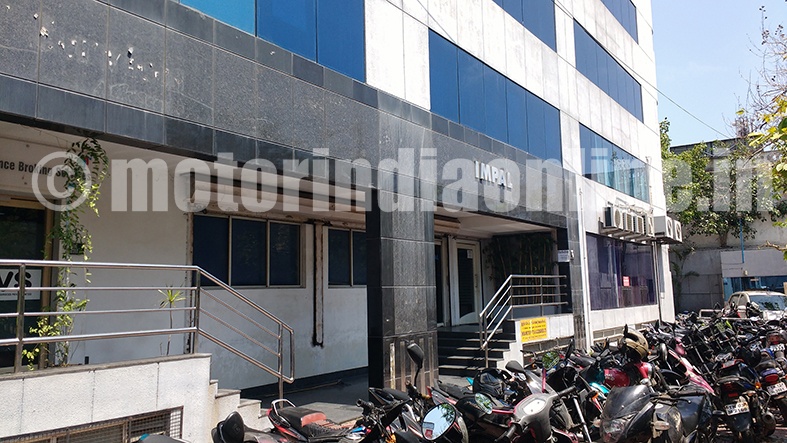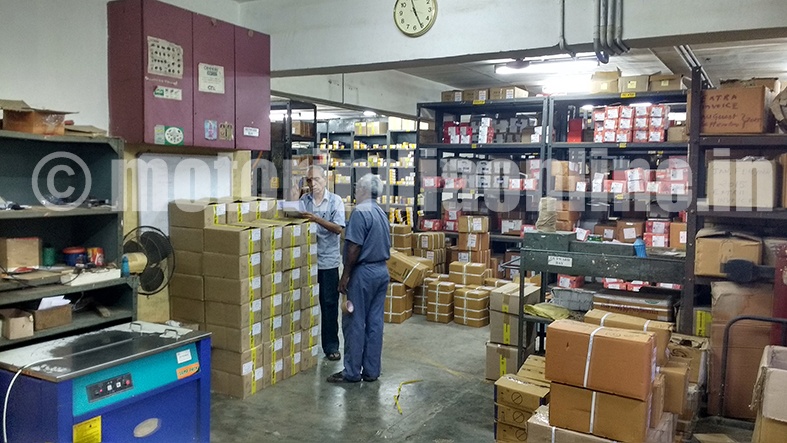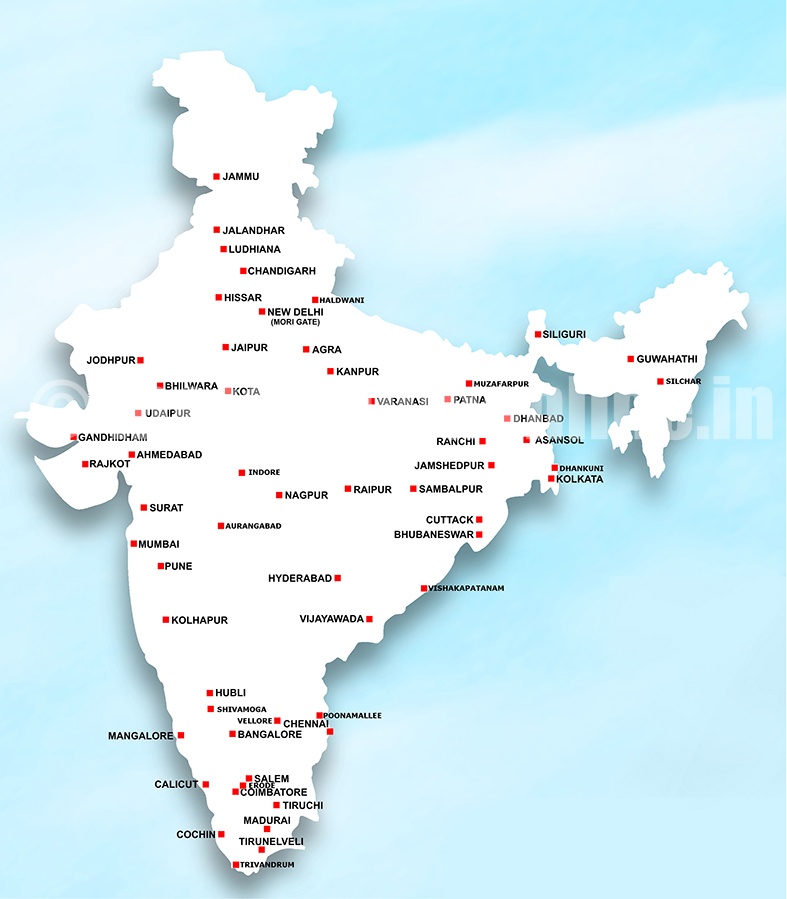Customer trust, reputed brands and pan-India network driving growth
It is indeed a pleasant and humbling experience to come across a leading company in its operating realm that has had its genesis and growth in sync with that of Indian automotive industry’s evolution since early ‘50s. Well, one such firm in the aftermarket business has been India Motor Parts & Accessories Ltd. (IMPAL), a public listed company with 57 branches, 20,000 dealers and serving the customers across all parts of India. The admiration factor multiplies when we learn that it has been the first company in the terrain to become debt free, dealing with many reputed and popular brands ranging from brakes, bearings to engine parts, lubricants, steering and chassis parts, etc., and has got a sizeable chunk of the business for quite some time period from North and Eastern parts of India rather than its familiar terrain of south India. When the pedigree of the company, linking it to the TVS Group is known, one can readily infer its imbibed professionalism, strong business fundamentals and customer centric approach; and in making a significant mark as the country’s largest independent distributor for automobile spares – definitely a creditable achievement.
To understand the group’s journey, since inception in the early ‘50s, we met IMPAL’s Managing Director Mr. N. Krishnan, a veteran with over three decades of rich experience in the field, for an interaction at their Chennai corporate office – a rare privilege for the media and an exclusive one to MOTORINDIA. Mr. Mukund S. Raghavan President – Marketing & Business Development, also joined in to provide his finer viewpoints about the business operations-read on for the excerpts of the interesting deliberations.
Initial years
IMPAL commenced its operations in 1954 with Chennai as headquarters to distribute spare parts of General Motors. General Motors exited India post-Independence and to keep up the supply chain of spares for the vehicles population, IMPAL was formed with three other shareholders, one each in north, west and east regions to cover the all India requirements. IMPAL was accorded licence to import and sell parts both directly and ship the same to other shareholders to meet the customer needs therein. During early ‘60s TVS Group companies like Brakes India, Wheels India, Lucas-TVS and others started manufacturing components and assemblies for OEMs and IMPAL took up the supplies for these products thro’ its network. Till 1971, IMPAL was essentially a one location company supplying the spares thro’ its established network. The second milestone Mr. Krishnan points out was in 1971 when they went to Delhi to sell the spare parts. He adds: “Our success during those times was essentially in geographical thrust to the areas of India that others did not go. We approached firstly the Delhi market for sale of Sundram Fasteners and Lucas-TVS parts; and with all documents and tools of sale like printed bill books, Kardex inventory cards, etc., that set a new trend in the market at that time. Sales transactions by others at that juncture were done rarely with taxes and at other times thro’ plain paper with no taxes and we established the new benchmarks to bring the market under the organised stream. Our USPs were in offering quality spare parts, serving the customers thro’ organised sales structure and supplying spares thro’ proper documentation. In the initial phase, everything on spares front was in short supply and many of the distributors concentrated only on sales and not on FOC’s or warranties. However we also focussed on warranty for the portfolio handled irrespective of whether it was supplied by IMPAL or others to provide the spares to customers first and take up the issues later with the component manufacturers. This enabled us to get the customers’ trust and belief in us and forge a long term business relationship.”
IMPAL expanded its operations rapidly and crossed several milestones by opening the branches all over India. Kolkata branch was started in 1973 followed by Jalandhar, Vijayawada, Cuttack, Jodhpur, Kanpur, etc. The turnover in FY ‘94 touched Rs. 100 crores; and with steady growth, further expansion of branches and product lines, it stands today at about Rs. 500 crores making IMPAL as one of the leading players in the aftermarket space.
Business approach and program
IMPAL has 57 branches all run by its own staff and serves the dealers thro’ these establishments. The approach has been pan India with multi-brand products of reputed manufacturers like Brakes India, SFL (Hex & Socket), SFL AUTOLEC, WABCO, LUCAS-TVS, TEL, SBL, Rane Group (Rane Madras, Rane Engine Valve, Rane TRW), Anand Group (Gabriel and Puralator), Valeo, TRANSWORLD ENTERPRISES (GOGO), SKF, to name a few. They have in their portfolio 50 different products and focus only on OEM approved products of suppliers. Suppliers in their consideration should be from ACMA or of OE quality level and products imported or local makes. IMPAL looks at not who supplies the products but who stands for the responsibility and looks after warranty and supports their customers for service.
Domain challenges
Mr. Krishnan indicates that the main domain challenges in his perception include withstanding technology impacts/upheavals, changing taxation regulations, stagnant material prices, counterfeit trends and OEM (both PV & CV) participation in the segment. Elaborating on the same he says: “There was huge dip on engine components during mid-90s. We were heavily dependent on engine components like pistons, piston rings, valves, etc., but the market collapsed due to various factors like changes in engine design, life, fuel & extended warranties leading to longer engine life and increased reliability. All of the above resulted in the spares segment becoming unattractive and IMPAL despite the loss of revenue for a short time moved the focus over to brakes and chassis parts line which saw a quantum leap due to soaring vehicle population. Hence we are always on the lookout for new product lines to stay ahead. Taxation is another problem, and we have faced various challenges from non-uniform to uniform taxes, VAT and now the impending GST. Such changes cause a business slow down as dealers become apprehensive and reduce their offtake but with slow understanding normalcy gets restored after several months. Yes, one will have to go thro’ this tough period. From late ‘90s for over a decade, spare parts prices have increased steadily every year due to increase in material costs, mainly due to steel and other commodities. This increased our top line steadily but in the last 5 years there has been no increase leading to standstill or decreasing prices resulting in a flat top line. This is another challenge spares segment has to face from time to time.”
Counterfeit spares is a serious issue, points out Mr. Mukund, He explains: “Initially counterfeit referred to essentially companies fraudulently utilising the OE’s brand or their packaging to sell their products. But this has got diluted in many ways. We have firms now supplying low grade products as originals and imports from China are too passing off as OE spares. Yes, there are suppliers of good quality products not supplying their components to OEMs who approach aftermarket and we also deal with many such suppliers. But in safety critical products like brakes, it’s important to go only for OEM approved parts.
Mr. Krishnan mentions that in India we have 5 different channels of supplies. “Firstly it’s OE Spares (O.E.S) and Secondly, it’s genuine OE Quality Spares sold with warranties of suppliers by distributors like IMPAL and may or may not be cheaper compared to OE spares. Third, is the low quality PARTS supplied by unorganised sectors at 30 plus % cheaper as compared to OE products; fourthly it’s the cheap imported products and lastly it’s the spurious types also referred to as counterfeit or fake parts,” he adds.
“The other major growing challenge has been from OEMs (PV & CV) who have entered the market and aggressively pushing the spares thro’ their approved dealer outlets. This started in the cars segment with Maruti setting the trend with emphasis on TCO and it has spread now to CV segment too. More importantly we see the pressure coming on Tier-1 suppliers, viz., to supply more of their products to OEMs while maintaining the supplies to distributors like us. There are also some Japanese and Korean car manufactures who are insisting their component vendors not to sell their products in the aftermarket. This development is also catching up in the CV segment. While small size suppliers are prevented from selling their products in their after markets, bigger companies who supply products to their drawings and specs to OEMs have continued to supply their parts to their aftermarket distribution channels too. Yes, it’s a worrying development but distributors will have to improve their reach and service to expand their business. In India, with CV service set-ups like workshops mainly in the unorganised sector, IMPAL has that advantage thro’ their reach, credit facilities and trust to improve on their business performance,” expresses Mr. Krishnan. Mr. Mukund states that a pan India distributor dealing in multi-brand products like IMPAL has a significant advantage amidst these challenges; and increasing multi-brand workshops especially in the cars segment have a strong preference for IMPAL-like one stop shop distributor to meet all their needs.
Mr. Krishnan sums up the distributor status as ‘scarred and scared’ in a lighter vein, quoting popular American singer and song writer Rod Stewarts’ “scarred and scared” lyrics – in having weathered and awaiting more of the industry convulsions, growth pangs, tax and OEM challenges. On a serious note however it is to be observed that IMPAL despite the sterling performance and laurels galore in the domain, keeps a low profile and works with a dedicated network of dealers with clear goals in protecting all stake holders’ interest – a rare trait indeed during the current times. With the radical changes expected to shortly unfold in the automotive terrain and likely to cause a paradigm shift, IMPAL must have already chalked out their game plan to address the business challenges and opportunities. We will come to know of it only when it implements the same and no surprises herein knowing well its firm conviction in result oriented approach and ground level actions rather than in high profile announcements of its future plans.


